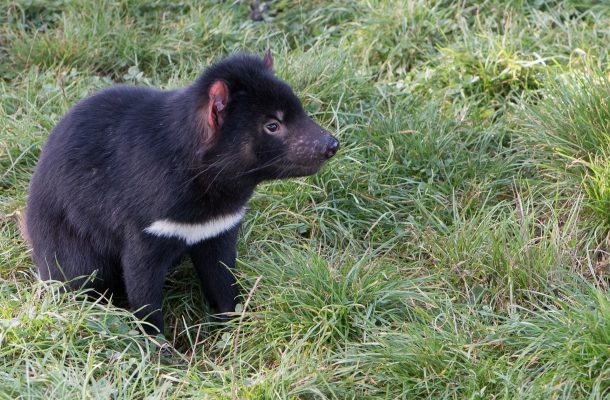Can we save the Tasmanian devil?

Ahead of National Threatened Species Day [on 7 September] a new book offers an update on the campaign to save the Tasmanian devil, which has experienced a dramatic reduction in its population.
Saving the Tasmanian devil: Recovery through Science-based Management documents the journey taken by partner organisations in the Save the Tasmanian Devil Program (STDP) in the discovery of Devil Facial Tumour Disease (DFTD).
The book also provides the lessons learned from a program that has adapted to new information and research over 15 years, providing a solid foundation for future directions to continue securing the Tasmanian devil in the wild.
Tasmanian Governor Her Excellency Kate Warner AC wrote the foreword to the book and will officially launch the publication at Government House tonight.
“Saving the Tasmanian Devil: Recovery Through Science-based Management is an important new publication in respect of the Tasmanian devil, wildlife conservation more broadly and understanding of the fragility and complexity of our precious global environment.”
Tasmanian Minister for the Environment Peter Gutwein said the book documents the work over the past 15 years by a range of conservation managers, researchers, biologists and other concerned parties in the fight to save one of Australia’s iconic species and the faunal emblem of Tasmania, the Tasmanian devil.
“The Tasmanian Government is a strong supporter of the Save the Tasmanian Devil Program to ensure an enduring and sustainable population of Tasmanian devils is maintained in the wild in Tasmania,” Mr Gutwein said.
“Since its inception, the Program has been a joint initiative between the Australian and Tasmanian governments, 51 national and international zoos, six academic institutions and the wider community.”
“Tasmanian devils are an iconic species and a critical part of the Tasmanian ecosystem. This new publication chronicles the efforts made and what has been learnt to ensure the long-term future for our iconic devil.”
Co-editor Dr Carolyn Hogg, research manager of the Australasian Wildlife Genomics Group at the University of Sydney, said the book documents all aspects of devil conservation.
“This includes captive devil populations, applied pathology, immunology and genetic research findings, adaptive management, and the importance of advocacy and partnerships,” Dr Hogg said.
“This book will provide management practitioners and conservation scientists with insight into the complexities of undertaking a program of this scale and will also be of value to researchers, students and others interested in conservation.”
Co-editor Dr Samantha Fox from the Save the Tasmanian Devil Program said the book describes how devil populations have declined across Tasmania.
“Although these small, fragmented devil populations are persisting in the landscape, they are susceptible to other threatening processes including roadkill, small population sizes and the consequential lack of genetic dispersal,” Dr Fox said.
Dr David Pemberton, Save the Tasmanian Devil Program Manager and fellow co-editor, said the future of the devil remains in the balance.
“The plight of the Tasmanian devil has become well-known globally due to excellent communication and strong collaborations between state, national and international organisations, but its fate remains uncertain as devils persist with Devil Facial Tumour Disease, now two distinct forms of transmissible cancer.”
Co-editor Professor Katherine Belov AO from the University of Sydney summarised the efforts of all the authors in the book.
“This book shows how to integrate science with adaptive management practice and is a road map for future conservation programs,” she said.
Saving the Tasmanian devil: Recovery through Science-based Management is edited by Dr Carolyn Hogg and Professor Katherine Belov from the University of Sydney, and Dr Samantha Fox and Dr David Pemberton, from the Save the Tasmanian Devil Program (STDP).
It is published by CSIRO Publishing.
Open Forum is a policy discussion website produced by Global Access Partners – Australia’s Institute for Active Policy. We welcome contributions and invite you to submit a blog to the editor and follow us on Twitter, Facebook, Linkedin and Mastadon.










